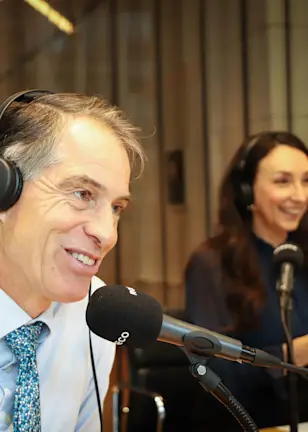The move marks a new phase of global trade policy uncertainty which may hamper technology spillovers, trade flows and ultimately backfire on US economic growth and inflation. The Peterson Institute estimates that the recent tariffs announcement on China, Canada and Mexico would be equivalent to an incremental tax increase for the typical US household of USD 1,200 a year1.
While the freshly appointed Treasury Secretary Scott Bessent has been a proponent of a more gradual approach toward raising tariffs, Trump reiterated his threat to enact across-the-board tariffs that are “much bigger” than 2.5%. The Smoot-Hawley Act saw tariffs increase up to 60% in the early 1930s, the highest ever recorded in American history, but Trump has threatened to impose tariffs on US trading partners as high as 100%.
Immediate market reactions
The swift execution of his tariff threat spurred equity market volatility, with the usual safe havens of gold and the dollar rallying. After Trump abruptly pulled the threat of sweeping tariffs on Colombia earlier last week following a deal on deported migrants, the market was convinced that Trump’s bite would be softer than his bark.
However, the announcement of the latest tariffs on Canada and Mexico indeed suggests Trump’s bite predominantly serves border security, migration control and the flow of fentanyl into the US. On Monday, Mexican President Claudia Sheinbaum said the US administration will hold off on tariffs for a month in exchange for Mexico’s increased efforts to restrict drug flow across the Mexican-US border. The news led to a swift reversal of the earlier rally in safe havens.
Asset market implications
Tariffs negatively impact global trade volumes as higher import prices reduce demand for foreign goods. Our research shows that a slowdown in global trade volumes is typically associated with a stronger US dollar and higher gold, as well as US Treasury bond prices and equity markets trading lower. The 2018/2019 tariffs announcements during the first Trump administration showed that the S&P 500 as well as its Chinese counterpart the CSI300 traded around 2% lower in the subsequent 20 trading days.
With markets now forced to second-guess Trump on further actions, US trade policy uncertainty has reached the highest level in 40 years, second only to the US-China trade war peak in mid-2019. We expect market volatility to remain elevated in the near term, reflecting a significant risk of another high impact trade announcement toward China, Europe, and/or Japan.
The swift deal between Trump and his Canadian and Mexican counterparts again underlines the mercantilist nature of the new US presidency. Countries with a high trade surplus with the US, like Germany, may adopt Mexico’s footsteps, and take a pragmatic approach by buying more US LNG and ramping up defence spending further above 2% of GDP. Yet, the EU works by consensus, and more autarkic countries like France could prove to be a spanner in the works for the EU to form a strong, unified front in trade negotiations.
In Asia, China’s President Xi Jingping may struggle to convince the US to enter into a revived trade agreement. The country did not live up to the Phase One agreement struck in 2020, where China promised to buy an additional USD 200 billion in US goods and services. If the Chinese leadership fails to convince the US administration, Trump might step up the escalatory ladder, necessitating China to ramp up domestic policy stimulus and weaken the yuan versus the dollar to offset the potential hit on its exports to the US.
Get the latest insights
Subscribe to our newsletter for investment updates and expert analysis.
Broader economic implications
We continue to watch the impact of these tariffs on inflation and the development of trade negotiations by assessing three main transmission channels. First, US consumers might substitute tariffed import goods with cheaper, more available domestic goods, potentially denting the inflationary impact of tariffs.
Second, currency market fluctuations play a critical role. During the first trade war of 2018/2019, the strengthening dollar sizably offset the inflationary impact of the US tariffs on Chinese goods, whereas China mitigated the erosion of its competitiveness by weakening the yuan against the dollar. Third, the duration of the tariffs put in place matters. Judging by the actions from the White House last week, markets need to price the call optionality of any tariffs enacted.
Positioning
We saw complacency about the risk of tariffs announcements at the end of last week, bringing along more pronounced downside risks. This followed existing susceptibility to a trade shock judging by the gap that opened last year between historically elevated P/E multiples and US earnings revisions. A stronger dollar for longer erodes US multinationals external competitiveness, creating a potential earnings headwind.
We observe that forward earnings growth projections for the US started to rollover after Trump announced the first round of tariffs on China in July 2018. Robeco Sustainable Multi-Asset Solutions therefore trimmed its equity exposure last week, while increasing our positions in gold and the US dollar. The evolving trade relations between the US and China will remain at the heart of global trade uncertainty.
In trade, it takes two to tango. Yet, so far, the moves between the two superpowers have been out of step.


















